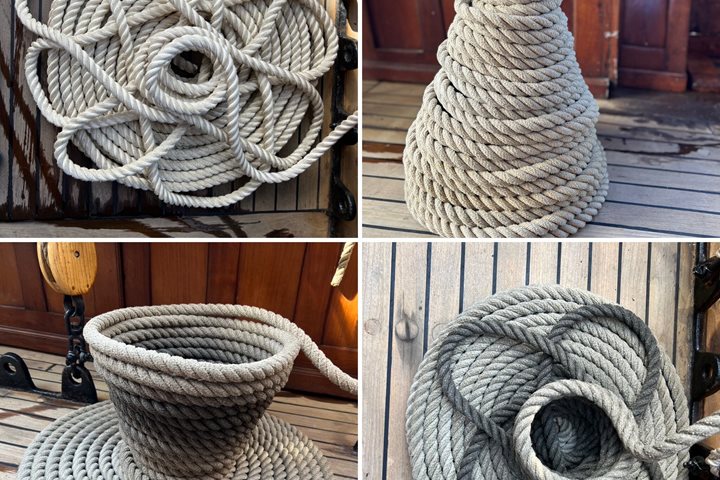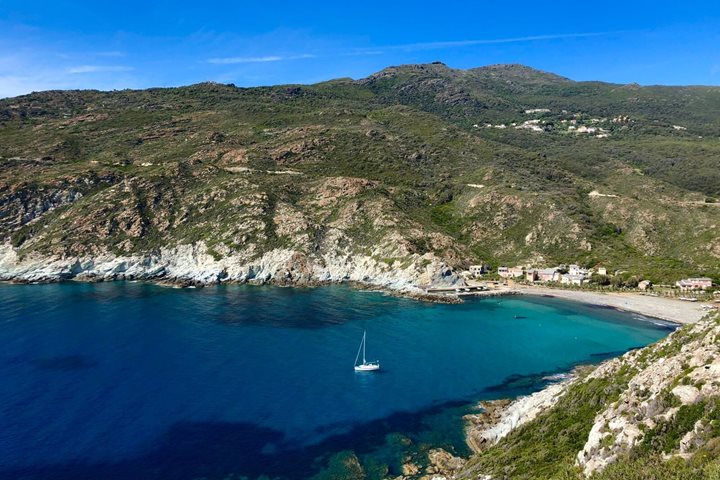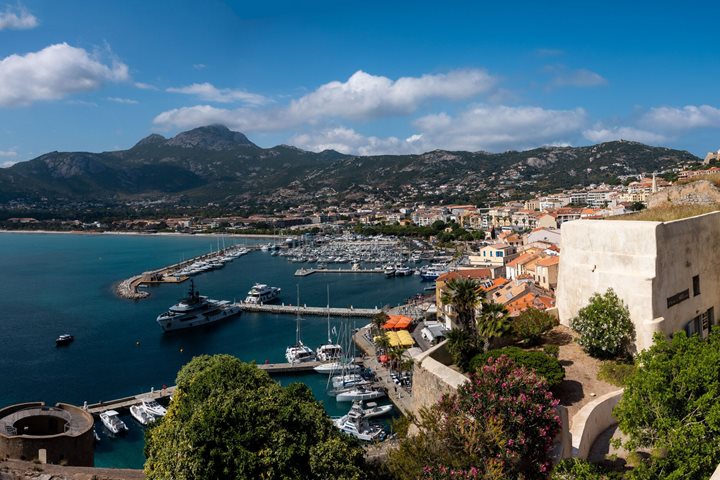We entered the dramatically beautiful fjord-like channel to the charming fortified village of Bonifacio at 6:15AM. Corsica’s geology is largely granitic with the single exception of Bonifacio at the very southern end of the island which is a pale crème-colored limestone. Bonifacio looks south to Sardinia across a narrow channel of 12 kilometers. Before the melting of the ice, Sardinia and Corsica were one island. But in 12000BC when the ice of the last ice age melted, the low land filled with 150 meters of sea and now, we have two islands. The channel is treacherous for shipping as it is shallow, filled with reefs and small islands. Before electronic radar, it was a watery graveyard. Sardinia’s fertile green plains give way to Corsica’s rugged craggy mountains. Prior to climate change, snow covered the highest mountains throughout the summer. The highest peak is over ten thousand feet.
The morning was leisurely. We boarded our coaches for the 75-minute drive to the picturesque village of Sartène. Our drive took us through the machair vegetation, and the rich green of the various plants competed for earth with the massive outcroppings of granite. Sartène village is a picturesque mélange of stone houses and shops in a maze of tiny alleys and streets that seem always climbing up or down. The single level place is the picturesque main plaza. We arrived at the right time as the great tourist season had not yet begun and Sartène was not crowded. On our return to the Sea Cloud, we passed by the lion of Corsica – a massive granitic rock which looks like a large lion at rest.
After lunch we took the small trolley with open cars to the towering pinnacle of the fortress village of Bonifacio. The weather was beautiful bright sun but not too warm. The name of the city is from a noble Tuscan family who settled here. It is also the ancestral home of the Bonaparte family. Although Napoleon was born in Ajaccio on the central northwestern part of the island, he had ancestors from Bonafacio who were likely Genovese. They spelled the family name Buonaparte in the Italian manner. The people of Bonifacio speak a dialect of Corsican that is very different than Corsican which itself is different than French. I loved that the street signs were in Corsican and in Bonifacioeese! We walked the small cobble streets past the quaint shops. Did you notice the number of shops selling knives? Many of the knives were stilettos and were inscribed with the word “vendetta.” A rationale for this preoccupation with knives may have something to do with the past’s historic lack of a serious police force; the intensely intimate family structure; and the need to take justice into one’s own hands when a grievance was felt. We sailed out by the beautiful white sandstone cliffs on our way to Ajaccio.
Cocktails followed on arrival back home and dinner, a “French Buffet,” was served on lido deck at 7:30PM. Pianist, Mario Spadaro serenaded us with his delightful piano music as we enjoyed another great dinner.









